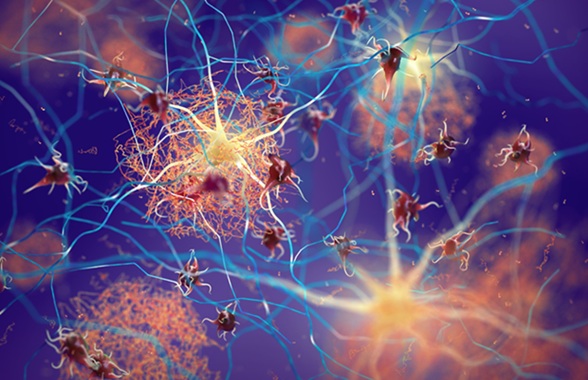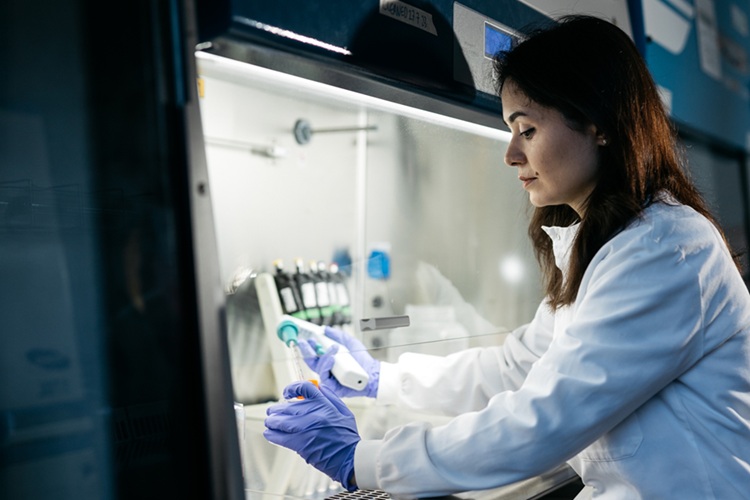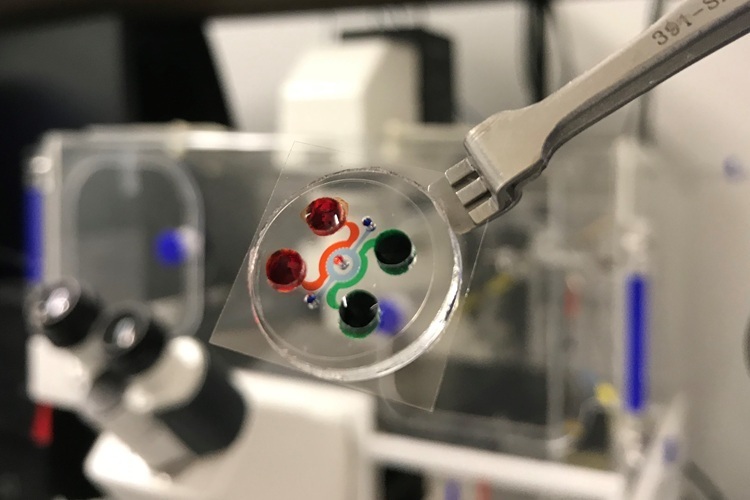Two Secreted Proteins Prepare Breast Cancer Cells for Metastasis
|
By LabMedica International staff writers Posted on 21 Apr 2015 |

Image: Two adjacent sections of a mouse breast tumor. The tissue at left was stained so that normal blood vessels can be seen (black arrow); extending from these vessels are blood filled channels (green arrows). On the right, the tissue was stained for a fluorescent protein expressed by the tumor cells. Here it is seen that blood-filled channels were actually formed by tumor cells in a process known as vascular mimicry (Photo courtesy of Cold Spring Harbor Laboratory).
Two genes that code for secreted proteins have been found to be responsible for the development of vascular mimicry—imitation blood vessels—by tumor cells and for preparing some tumor cell clones to spread away from the site of the primary tumor.
Investigators at Cold Spring Harbor Laboratory (NY, USA) and colleagues at the University of Cambridge (United Kingdom) studied the two genes, SERPINE2 (serpin peptidase inhibitor, clade E) and SLPI (secretory leukocyte peptidase inhibitor), in a polyclonal mouse breast tumor model.
The SERPINE 2 gene encodes a member of the serpin family of proteins, a group of proteins that inhibit serine proteases. Thrombin, urokinase, plasmin, and trypsin are among the proteases that this family member can inhibit. This gene is a susceptibility gene for chronic obstructive pulmonary disease and for emphysema. The SLPI gene encodes a secreted inhibitor which protects epithelial tissues from serine proteases. It is found in various secretions including seminal plasma, cervical mucus, and bronchial secretions, and has affinity for trypsin, leukocyte elastase, and cathepsin G. Its inhibitory effect contributes to the immune response by protecting epithelial surfaces from attack by endogenous proteolytic enzymes; the protein is also thought to have broad-spectrum antibiotic activity.
The investigators found that breast tumors in their mouse model comprised distinct clones whose component cells specialized in various functions such as dominating the primary tumor, contributing to metastatic populations, or showing tropism for entering the lymphatic or vasculature systems. The investigators were able to correlate these stable properties with distinct gene expression profiles. Those clones that efficiently entered the vasculature expressed the two secreted proteins, Serpine2 and Slpi, which were necessary and sufficient to program these cells for vascular mimicry. The data, which was published in the April 8, 2015, online edition of the journal Nature, indicated that these proteins not only drove the formation of extravascular networks but also ensured their perfusion by acting as anticoagulants.
The investigators proposed that vascular mimicry supported the ability of some breast tumor cells to contribute to distant metastases while simultaneously satisfying a critical need of the primary tumor to be fed by the vasculature. Enforced expression of SERPINE2 and SLPI in human breast cancer cell lines also programmed them for vascular mimicry, and SERPINE2 and SLPI were overexpressed preferentially in human patients that had lung-metastatic relapse. Thus, these two secreted proteins, and the phenotype they promote, may be broadly relevant as drivers of metastatic progression in human cancer.
"It is very neat to watch and see cells evolve to have these capacities," said senior author Dr. Simon Knott, research professor at Cold Spring Harbor Laboratory. "But on the other hand it is really scary to think that these cells are sitting there in people doing this. Targeting them might provide therapeutic benefits, but we are not sure yet."
Related Links:
Cold Spring Harbor Laboratory
University of Cambridge
Investigators at Cold Spring Harbor Laboratory (NY, USA) and colleagues at the University of Cambridge (United Kingdom) studied the two genes, SERPINE2 (serpin peptidase inhibitor, clade E) and SLPI (secretory leukocyte peptidase inhibitor), in a polyclonal mouse breast tumor model.
The SERPINE 2 gene encodes a member of the serpin family of proteins, a group of proteins that inhibit serine proteases. Thrombin, urokinase, plasmin, and trypsin are among the proteases that this family member can inhibit. This gene is a susceptibility gene for chronic obstructive pulmonary disease and for emphysema. The SLPI gene encodes a secreted inhibitor which protects epithelial tissues from serine proteases. It is found in various secretions including seminal plasma, cervical mucus, and bronchial secretions, and has affinity for trypsin, leukocyte elastase, and cathepsin G. Its inhibitory effect contributes to the immune response by protecting epithelial surfaces from attack by endogenous proteolytic enzymes; the protein is also thought to have broad-spectrum antibiotic activity.
The investigators found that breast tumors in their mouse model comprised distinct clones whose component cells specialized in various functions such as dominating the primary tumor, contributing to metastatic populations, or showing tropism for entering the lymphatic or vasculature systems. The investigators were able to correlate these stable properties with distinct gene expression profiles. Those clones that efficiently entered the vasculature expressed the two secreted proteins, Serpine2 and Slpi, which were necessary and sufficient to program these cells for vascular mimicry. The data, which was published in the April 8, 2015, online edition of the journal Nature, indicated that these proteins not only drove the formation of extravascular networks but also ensured their perfusion by acting as anticoagulants.
The investigators proposed that vascular mimicry supported the ability of some breast tumor cells to contribute to distant metastases while simultaneously satisfying a critical need of the primary tumor to be fed by the vasculature. Enforced expression of SERPINE2 and SLPI in human breast cancer cell lines also programmed them for vascular mimicry, and SERPINE2 and SLPI were overexpressed preferentially in human patients that had lung-metastatic relapse. Thus, these two secreted proteins, and the phenotype they promote, may be broadly relevant as drivers of metastatic progression in human cancer.
"It is very neat to watch and see cells evolve to have these capacities," said senior author Dr. Simon Knott, research professor at Cold Spring Harbor Laboratory. "But on the other hand it is really scary to think that these cells are sitting there in people doing this. Targeting them might provide therapeutic benefits, but we are not sure yet."
Related Links:
Cold Spring Harbor Laboratory
University of Cambridge
Latest BioResearch News
- Genome Analysis Predicts Likelihood of Neurodisability in Oxygen-Deprived Newborns
- Gene Panel Predicts Disease Progession for Patients with B-cell Lymphoma
- New Method Simplifies Preparation of Tumor Genomic DNA Libraries
- New Tool Developed for Diagnosis of Chronic HBV Infection
- Panel of Genetic Loci Accurately Predicts Risk of Developing Gout
- Disrupted TGFB Signaling Linked to Increased Cancer-Related Bacteria
- Gene Fusion Protein Proposed as Prostate Cancer Biomarker
- NIV Test to Diagnose and Monitor Vascular Complications in Diabetes
- Semen Exosome MicroRNA Proves Biomarker for Prostate Cancer
- Genetic Loci Link Plasma Lipid Levels to CVD Risk
- Newly Identified Gene Network Aids in Early Diagnosis of Autism Spectrum Disorder
- Link Confirmed between Living in Poverty and Developing Diseases
- Genomic Study Identifies Kidney Disease Loci in Type I Diabetes Patients
- Liquid Biopsy More Effective for Analyzing Tumor Drug Resistance Mutations
- New Liquid Biopsy Assay Reveals Host-Pathogen Interactions
- Method Developed for Enriching Trophoblast Population in Samples
Channels
Clinical Chemistry
view channel
New Clinical Chemistry Analyzer Designed to Meet Growing Demands of Modern Labs
A new clinical chemistry analyzer is designed to provide outstanding performance and maximum efficiency, without compromising affordability, to meet the growing demands of modern laboratories.... Read more
New Reference Measurement Procedure Standardizes Nucleic Acid Amplification Test Results
Nucleic acid amplification tests (NAATs) play a key role in diagnosing a wide range of infectious diseases. These tests are generally known for their high sensitivity and specificity, and they can be developed... Read moreMolecular Diagnostics
view channel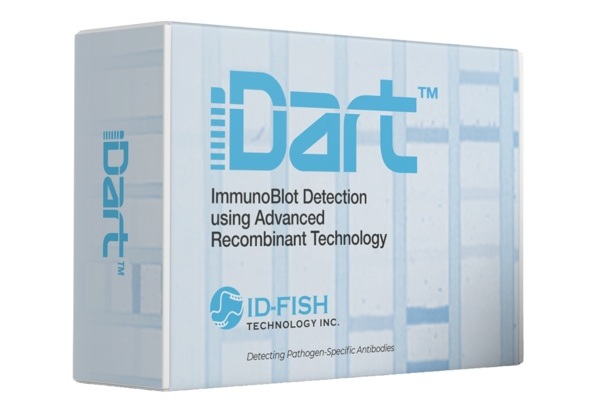
Newly-Cleared Technology a Game Changer for Diagnosis of Lyme Disease
Lyme disease is one of the fastest-growing infectious diseases, with approximately 476,000 cases diagnosed annually in the United States. The symptoms of Lyme disease, such as fever, headache, fatigue,... Read more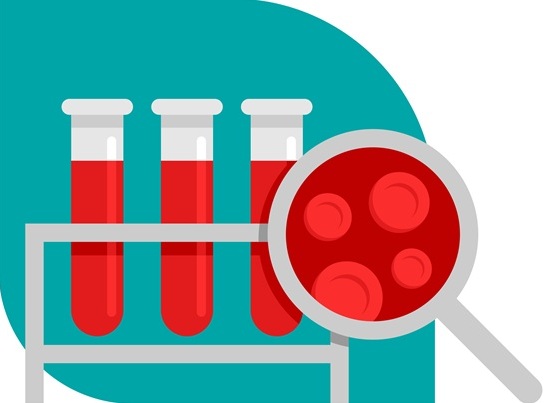
Innovative Liquid Biopsy Test Uses RNA to Detect Early-Stage Cancer
Detecting and diagnosing cancer, particularly in its early stages, remains a significant challenge. Liquid biopsies offer a promising non-invasive alternative to traditional biopsies, which require removing... Read moreHematology
view channel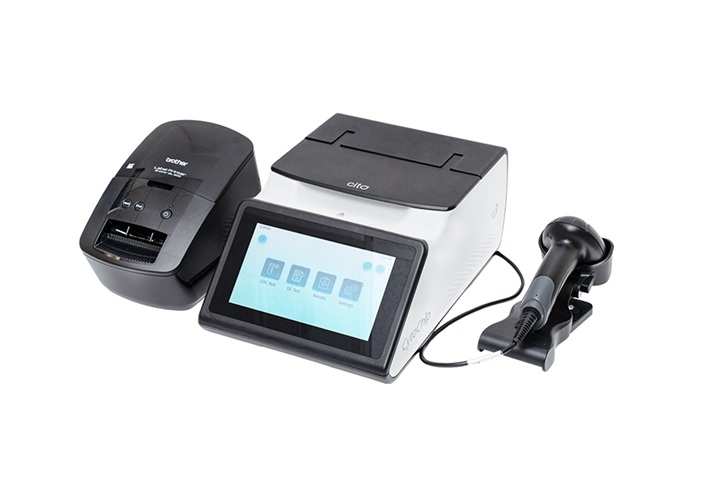
Disposable Cartridge-Based Test Delivers Rapid and Accurate CBC Results
Complete Blood Count (CBC) is one of the most commonly ordered lab tests, crucial for diagnosing diseases, monitoring therapies, and conducting routine health screenings. However, more than 90% of physician... Read more
First Point-of-Care Heparin Monitoring Test Provides Results in Under 15 Minutes
Heparin dosing requires careful management to avoid both bleeding and clotting complications. In high-risk situations like extracorporeal membrane oxygenation (ECMO), mortality rates can reach about 50%,... Read moreImmunology
view channel
World’s First Clinical Test Predicts Best Rheumatoid Arthritis Treatment
Rheumatoid arthritis (RA) is a chronic condition affecting 1 in 100 people in the UK today, causing the immune system to attack its joints. Unlike osteoarthritis, which is caused by wear and tear, RA can... Read more
Blood Test Detects Organ Rejection in Heart Transplant Patients
Following a heart transplant, patients are required to undergo surgical biopsies so that physicians can assess the possibility of organ rejection. Rejection happens when the recipient’s immune system identifies... Read more
Liquid Biopsy Approach to Transform Diagnosis, Monitoring and Treatment of Lung Cancer
Lung cancer continues to be a major contributor to cancer-related deaths globally, with its biological complexity and diverse regulatory processes making diagnosis and treatment particularly difficult.... Read more
Computational Tool Exposes Hidden Cancer DNA Changes Influencing Treatment Resistance
Structural changes in tumor DNA are among the most damaging genetic alterations in cancer, yet they often go undetected, particularly when tissue samples are degraded or of low quality. These hidden genomic... Read moreMicrobiology
view channel
Viral Load Tests Can Help Predict Mpox Severity
Mpox is a viral infection that causes flu-like symptoms and a characteristic rash, which evolves significantly over time and varies between patients. The disease spreads mainly through direct contact with... Read more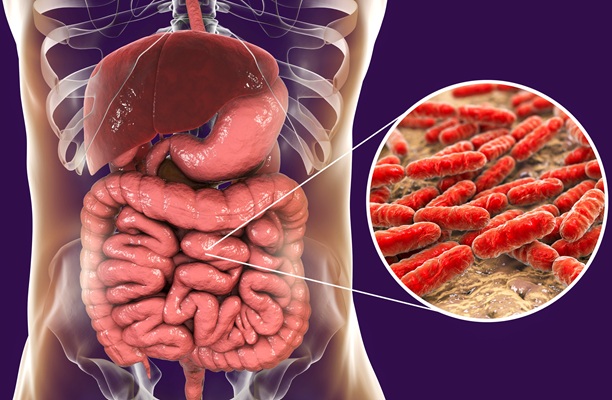
Gut Microbiota Analysis Enables Early and Non-Invasive Detection of Gestational Diabetes
Gestational diabetes mellitus is a common metabolic disorder marked by abnormal glucose metabolism during pregnancy, typically emerging in the mid to late stages. It significantly heightens the risk of... Read morePathology
view channel
AI Tool Enhances Interpretation of Tissue Samples by Pathologists
Malignant melanoma, a form of skin cancer, is diagnosed by pathologists based on tissue samples. A crucial aspect of this process is estimating the presence of tumor-infiltrating lymphocytes (TILs), immune... Read more
AI-Assisted Technique Tracks Cells Damaged from Injury, Aging and Disease
Senescent cells, which stop growing and reproducing due to injury, aging, or disease, play a critical role in wound repair and aging-related diseases like cancer and heart disease. These cells, however,... Read more
Novel Fluorescent Probe Shows Potential in Precision Cancer Diagnostics and Fluorescence-Guided Surgery
Hepatocellular carcinoma (HCC), a common type of liver cancer, is difficult to diagnose early and accurately due to the limitations of current diagnostic methods. Glycans, carbohydrate structures present... Read moreTechnology
view channel
Low-Cost Biosensing Technology Detects Disease Biomarkers in Minutes
Rapid at-home tests for diseases like COVID-19 have become increasingly popular for their convenience, but they come with a major drawback: they are less sensitive than the tests performed in medical settings.... Read more
AI Tool Could Help Identify Specific Gut Bacterial Targets for Treatment of Diseases
The human body hosts trillions of bacteria, particularly in the gut, which have a significant role in digestion and various other aspects of health. These gut bacteria produce a variety of metabolites... Read moreIndustry
view channel
Quanterix Completes Acquisition of Akoya Biosciences
Quanterix Corporation (Billerica, MA, USA) has completed its previously announced acquisition of Akoya Biosciences (Marlborough, MA, USA), paving the way for the creation of the first integrated solution... Read more
Lunit and Microsoft Collaborate to Advance AI-Driven Cancer Diagnosis
Lunit (Seoul, South Korea) and Microsoft (Redmond, WA, USA) have entered into a collaboration to accelerate the delivery of artificial intelligence (AI)-powered healthcare solutions. In conjunction with... Read more















